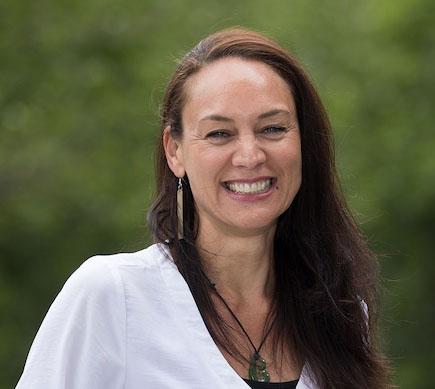
Plants have been used to treat sickness and injury since the beginning of time and the knowledge of traditional healers is as deep and as wide as Te Moana-nui-a-Kiwa.
A Samoan plant, known by taulāsea (traditional healers) for its powerful medicinal properties, was recently identified by University of Auckland virologist Dr Natalie Netzler (Ngāti Ruanui, Ngāti Hauā, Moto’otua) as effective in fighting the virus that causes COVID-19 in her lab tests. Natalie believes this discovery merely touches the surface of the knowledge of taulāsea about Samoan traditional remedies and their ability to heal. She says Samoan traditional remedies might have solutions to treating other troublesome viruses and she and a team of Pacific researchers have begun a research collaboration to better understand this potential.
Natalie knows first-hand how effective Samoan traditional healing methods are. Her Dad was born and raised in Samoa, and he would sometimes use traditional methods when ailments occurred. “In my family, we would often go to Dad for a Samoan massage (fofō) for a headache, so for me Samoan remedies are normal and often very powerful,” says Natalie.
Pasifika females are at the heart of the research team looking at Samoan traditional medicines, and taulāsea and their centuries of tried-and-true knowledge are crucial to the research. Taulāsea will be collecting and preparing their remedies with the support of the Scientific Research Organisation of Samoa, and Natalie will be testing them in the lab for their effectiveness against viral infections. Victoria University’s Dr Helen Woolner (Cook Island Māori) will be identifying the chemical profiles and active ingredients of the plants. Pasifika scientists from the Oceanic Medical University in Apia, as well as hospital clinicians in Samoa are also collaborating on different aspects of the research.
The currently funded research will test the remedies against influenza, RSV and viruses that cause the common cold and COVID-19. Through consultation in Samoa with clinical and research collaborators, Natalie understood that other viruses such as measles, Zika, dengue, hepatitis B and C are also key priorities for the Pacific and now they are also on the list for further study.
An important aspect of the research is evaluating how traditional medicines interact with modern pharmaceuticals, so taulāsea and doctors can be more empowered to correctly advise patients. Research has shown that many Pasifika patients use both modern and traditional remedies together. “We need to do this research to see if the combination of medicines is hindering each other’s effectiveness, or if they are stronger together,” says Natalie.
Central to the research is ensuring that the traditional knowledge is protected, and that the knowledge collected from the research is for the benefit of Samoans, says Natalie. “Our intention is to ensure that the IP stays with the taulāsea, so we won’t publish unless they are happy, and they will likely keep some of their preparations secret so they can be the administrators of it. The key part of this research is trust and we will ensure that the trust is maintained to ensure benefit of the taulāsea, the Samoan community and potentially the world by finding new treatments for viruses for which we have no cure,” says Natalie.
To ensure trust is maintained, the research is co-designed in partnership with Samoan taulāsea and Pasifika scientists. The samples will be blinded so only key people in the study will be able to link the results to the specific plants. “What happens with the knowledge after that will be up to the traditional knowledge holders,” she says.
Natalie is keen to work in the rongoā space in the future but says IP and data sovereignty issues need to be addressed to protect Māori and Pasifika, and a Māori-led approach is needed. She says there is already knowledge around the chemical properties of Aotearoa plants, however, often research with rongoā has not been done in a tika way, and the results may be impacted by incorrect use.
“We know that chemical profiles change according to soil, nutrients, time of collection, and seasonal changes. Mātauranga is so rich with what works and won’t work. In some previous studies the full picture has not been presented and so a collaborative approach is needed between scientists and mātauranga experts as to the tika way of approaching rongoā.”
Natalie believes such research will be particularly beneficial to isolated communities in the Pacific and Aotearoa, for those who do not have ready access to doctors or pharmaceuticals. The aim is to identify new antiviral uses for traditional medicines which are often much more accessible in remote areas where there are no hospitals, clinics or pharmacies, says Natalie.
“It all starts with co-design and priorities. We have an opportunity to bring together incredible traditional knowledge with some cutting-edge biomedical knowledge to address contemporary threats to our health in partnership,” she says.